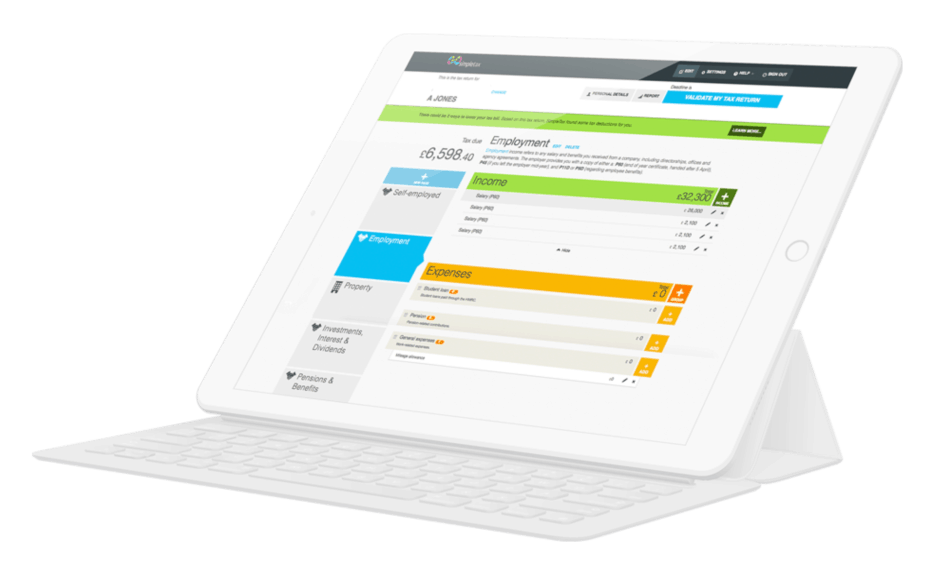HMRC crackdown to target eBay, Amazon, Airbnb, Fiverr, Uber, Deliveroo and Etsy side hustle income earners
About a quarter of UK adults are believed to have a “side hustle”, whether it’s a secondary job or side business that brings in extra income. UK side hustles have been estimated to generate £72bn a…
5 Minute Read
Last Updated: 18th April 2024
About a quarter of UK adults are believed to have a “side hustle”, whether it’s a secondary job or side business that brings in extra income. UK side hustles have been estimated to generate £72bn a year.
Popular side-hustle platforms include eBay, Amazon, Etsy, Airbnb, Fiverr, Uber and Deliveroo, and (whether innocently or otherwise) many people do not pay tax on additional taxable income they earn from such sources. That could be about to change.
HMRC crackdown on unreported side hustle income
From 1 January 2024, HMRC has instructed popular platforms to record how much income people are making and report it, so that HMRC can then investigate and pursue them for unpaid tax where payable. Reportedly, HMRC will invest £36.69m towards this end and employ 24 full-time staff to enforce this new initiative which seeks to “bear down on, detect and tackle tax evasion”.
If you’re already paying tax on earnings from such sources, the initiative will have no impact. If you’re not or you’re planning to soon start earning additional income from them, naturally you’ll be wondering how much tax you’ll pay and how you tell HMRC about your taxable additional income.
When do you need to report side-hustle income?
- Each year, you can earn £1,000 of side-hustle gross income (ie total sales or revenue) tax-free, because this is considered “casual or miscellaneous” income. This is your Trading Allowance and you don’t have to report this income to HMRC, because no tax is payable.
- But once your side-hustle gross income goes above the £1,000 threshold, it can be subject to Income Tax, depending upon how much taxable income you earn from all other sources.
- If you earn money from more than one side hustle, the total taxable income from them all cannot be more than £1,000, if you want to avoid having to register and pay tax.
- Similarly, if you earn less than £1,000 gross income via airbnb, thanks to the Property Allowance, you won’t have to report it to HMRC, it’s tax-free income. As soon as you earn more than £1,000, it’s reportable taxable income.
Registering for tax as a sole trader
Most people who need to report taxable side-hustle trading income to HMRC register as a “sole trader”, which is free, quick and easy. Sole traders make up 56% of the UK’s 5.5m business population. However, as a sole trader, you’re personally liable for your business debts (if you trade as a limited company, you’re not).
- You set up as a sole trader by registering for Self Assessment via GOV.UK.
- If you haven’t registered previously, you must do so before 5 October in your side hustle’s second tax year, otherwise HMRC could fine you. The UK tax year runs from 6 April until 5 April the year after.
- Each year you’ll need to report your taxable income and any tax expenses you wish to claim to HMRC via a Self Assessment tax return (the SA100) plus supplementary page SA103 (and any other pages you need to fill out to report other types of taxable income).
- The Self Assessment online filing deadline each year is midnight on 31 January. Miss it and you face a £100 fine.
How much tax will your side-business pay?
Sole traders are taxed on their net profits, which is their actual profit once allowable costs have been deducted. You’re allowed to deduct certain tax expenses from your gross sales/income (which is why they’re called “allowable expenses”). Once other tax allowances and reliefs have been accounted for, HMRC will tell you how much tax you owe for that tax year.
The Income Tax band into which your total taxable income falls will determine how much tax you’ll pay on your side-hustle income. And as well as your Trading Allowance, you do not pay Income Tax on your first £12,570 of gross taxable income, because this is your tax-free Personal Allowance (which decreases by £1 for every £2 of net income over £100,000 and you don’t get any if your net income reaches £125,140).
Income Tax bands
- You’ll pay the basic rate of Income Tax of 20% if your total taxable income is between £12,571 and £50,270.
- You’ll pay the higher rate of Income Tax of 40% if your total taxable income is between £50,271 and £125,140.
- You’ll pay the additional rate of Income Tax of 45%, if your total taxable income is more than £125,140 (2023/24 tax year for all figures quoted above).
- Income Tax bands and rates are slightly different in Scotland.
Is National Insurance payable on side-business income?
- Even if you’re already paying Class 1 National Insurance contributions on your employed income via your employer’s payroll, as a sole trader, there may also be Class 2 and Class 4 NICs to pay on your side-hustle income.
- For the 2023/24 tax year, the Class 2 NIC rate is £3.45 a week, which you’ll need to pay if your profits are more than £12,570. You’ll also have to also pay Class 4 NICs of 9% until your profits reach £50,270, after which you pay 2% on any further profits.
Need to know! From 6 April 2024, the government will abolish Class 2 NICs, while reducing Class 4s. From 6 April 2024, self-employed people will pay 8% on their profits between £12,571 and £50,270, down from the current 9%. The government says this will amount to a £350 reduction per year for the average self-employed person earning £28,200.
What side-hustle tax expenses can you claim?
Potentially, providing that you don’t claim your £1,000 tax-free trading allowance, you can claim a wide range of “allowable expenses”, which are legitimate costs you pay to make sales. If you use something for your side hustle and personal reasons (mobile mobile phones and broadband are common examples), you can only claim for the business cost, not personal use. You’ll need to work out and claim a justifiable proportion.
Allowable expenses can include premises costs, which can mean rent, heating, lighting, water, business rates, phone and broadband. If you run your side-hustle business from home, you may be able to claim a proportion of your heating, electricity and water costs, Council Tax, mortgage interest or rent, broadband and telephone use.
Need to know! If working out exact costs is too complicated, you can claim flat-rate simplified expenses for working from home.
Allowable expenses also include stock and raw materials, packaging, printing, postage, office stationery, advertising and marketing, training and professional membership fees, insurance and bank charges.
Machinery and equipment, safety clothes and business-branded workwear can also be allowable expenses, as can bank charges, insurance and professional membership fees. Wages or professional fees that you pay to others are allowable expenses, including money paid to an accountant, solicitor, graphic designer or website builder.
You can claim for business-related fuel, parking, train or bus fares, but not journeys to and from your normal place of work. Again, should you prefer, you can claim flat-rate simplified expenses for vehicle use.
Read: 45 expenses you can claim when you’re a sole trader and/or What expenses can landlords claim against tax?
What tax records must I keep for my side hustle?
You must maintain accurate, up-to-date records, detailing your sales and expenses. Using accounting software is highly recommended, because it will help to keep you side-hustle business organised and really save you time when you’re completing your Self Assessment tax return.
HMRC can ask to see your financial records at any time. HMRC can charge you a penalty if your records are not accurate, complete and legible and you must keep them for at least five years after the 31 January online tax return deadline following the end of the tax year to which they refer.
If applicable, keep copies of all invoices you send to customers, as well as receipts and invoices for things you claim as tax expenses. If you plan to claim for fuel, keep a detailed mileage log, detailing distances travelled, locations and dates/times.
Further reading
- Could you turn your hobby into a business?
- 21 expenses you can claim as a private residential landlord
GoSimpleTax is award-winning software that makes it quick and easy to complete and file your side-hustle Self Assessment tax return and SA103. It can also prevent you from making basic tax return errors that can later cost you time and money. All this for just £55 (or less) a year! Thousands of sole traders, landlords and others trust and love GoSimpleTax. Start your FREE trial today!
Watch our video on tax changes for side hustles
Blog content is for information purposes and over time may become outdated, although we do strive to keep it current. It's written to help you understand your Tax's and is not to be relied upon as professional accounting, tax and legal advice due to differences in everyone's circumstances. For additional help please contact our support team or HMRC.
How to keep track of your side hustle income and expenses
16 Apr 2024
12 things business partners should know about Self Assessment
15 Apr 2024
Everything you need to know about payments on account
31 Mar 2024
How GoSimpleTax Works
Register
Simply register for free with your full name and email address.
Select Your Income
Select the income you receive and follow the hints and tips for potential tax savings.
Validate Your Information
Validate your personal information and submit directly to HMRC to get confirmation in just seconds.

Work Anywhere, With Any Device
Gone are the days of fretting over a calculator surrounded by scraps of paper at the eleventh hour.
GoSimpleTax’s tax return software uses the information you upload in real time to calculate your income and expenditure, working out the tax you owe and sending you helpful notifications when there’s the possibility of a mistake.
"The software is intuitive and proved very easy to navigate. I found the whole process refreshingly simple. I saved a lot of money too!"
Steve J.
Ordained Presbyter
"Easy to use and value for money. Everything you need to do your tax."
Gordon J.
Self Employed
"It fills in all the forms and sends them to the Inland Revenue. Not expensive either. Takes the stress out of doing your tax return online."
Ross G.
Team Rector

